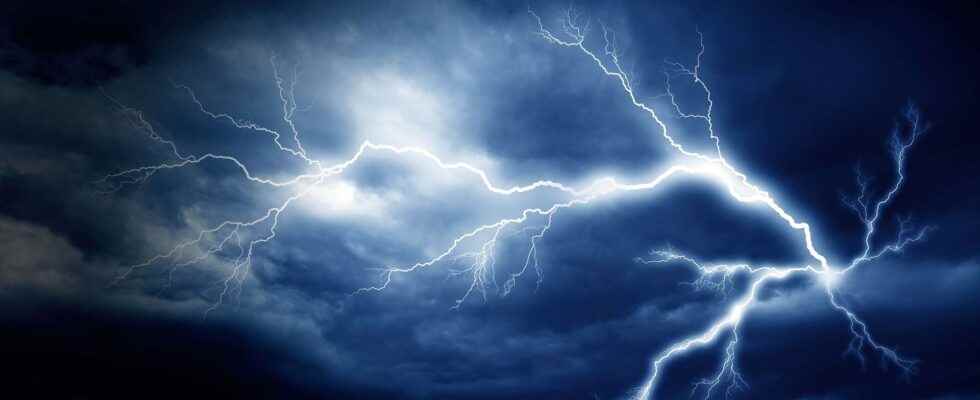New satellite instruments from the World Meteorological Organization recorded titanic flashes, two of which broke world records.
You will also be interested
[EN VIDÉO] Kézako: where do lightning come from, from the ground or from the sky? Storms are usually accompanied by rain, lightning and thunder, but do you know where exactly lightning originates? Unisciel and the University of Lille 1 explain to us, with the Kézako program, the mysteries of this phenomenon.
A new record for a mega lightning strike was recorded by the UN’s World Meteorological Organization (WMO) nearly two years ago on April 29, 2020. This colossal lightning strike spread over the Mississippi, of Louisiana and Texas, or 768 kilometers, 60 kilometers more than the previous record established in southern Brazil on October 31, 2018.
In addition, WMO experts on weather and climate extremes also recorded a new world record for the duration of one flash. It was caused on June 18, 2020 over Uruguay and northern Argentina, and lasted 17.1 seconds or 0.37 seconds longer than the previous record of March 4, 2019, also in the north from Argentina.
Extreme weather measuring instruments
Until a few years ago, data on lightning was collected by relay antennas and GPS receivers placed on the ground. However, this system did not allow lightning to be mapped beyond certain limits. Fortunately, these two flashes, which are behemoths in their category, could be recorded by satellites, in particular Goes-16 and Goes-17. The latter were equipped in 2018 with a new geostationary instrument for lightning mapping (Geostationary Lightning Mapper, GLM), which detects momentary changes in an optical scene, indicating the presence of lightning. It can record the length and duration of lightning but also to obtain other long-term information such as frequency and intensity.
The technology to observe lightning has therefore evolved considerably in recent years and allows the recording of weather records much higher than what was formerly the norm. Improved satellite remote sensing instruments are making it easier to spot lightning strikes that once went unnoticed. These extremes are defined as discharges electrostatic of great intensity that can reach hundreds of kilometers, called “mega-lightning”. Scientists expect that even bigger ones will exist and can be recorded as technology improves.
The danger of lightning
The WMO said the new extreme weather events were recorded in the Great Plains in North America and the La Plata Basin in South America, places that are known as hotspots for thunderstorms allowing the formation mega lightning bolts. The new records set therefore do not come from isolated events but are the product of active thunderstorms such as can be found in these geographical areas, making them very dangerous.
The UN agency maintains official global records for these ranges of extreme weather and climate events, including records of two types ofaccidents major lightning-related issues.
The first type of accident recorded is one where the victims are directly affected by a single blow lightning. The first recorded case dates back to 1975 in Zimbabwe, when 21 people died while hiding in a hut that was hit. The second type of accident concerns those who have been struck indirectly, as was the case in Egypt in 1994, when lightning struck reservoirs of oil causing the city to be flooded by the combustible in fire and causing the death of 469 people.
WMO experts point out that large buildings and fully enclosed vehicles are the only places protected against lightning according to the principle of Faraday cage.
Interested in what you just read?
